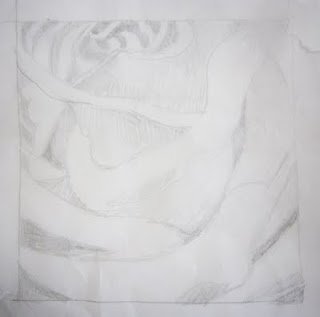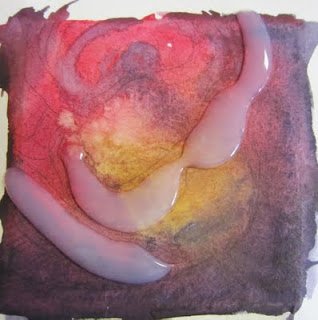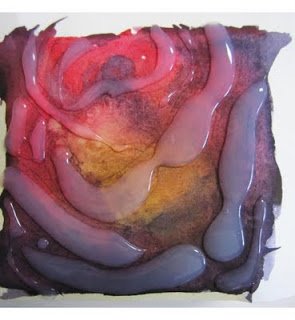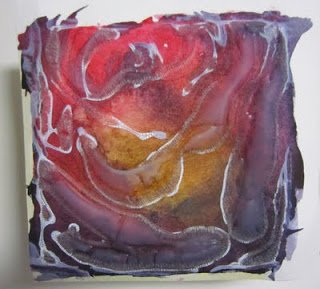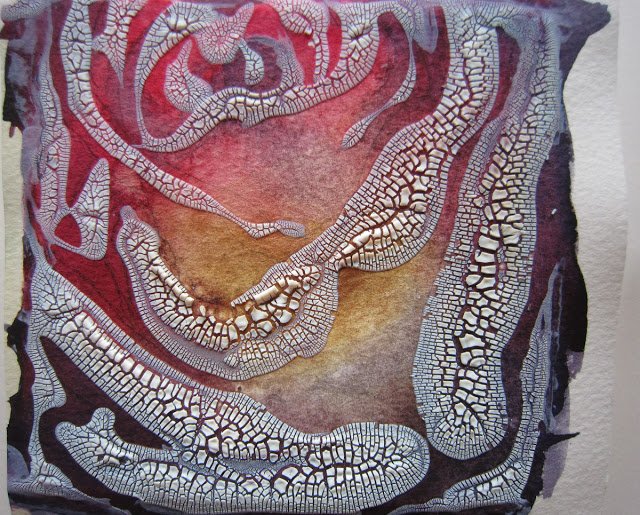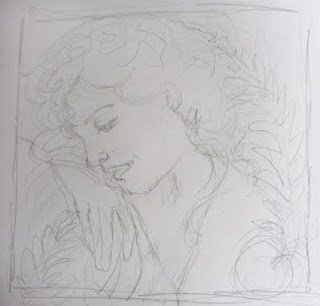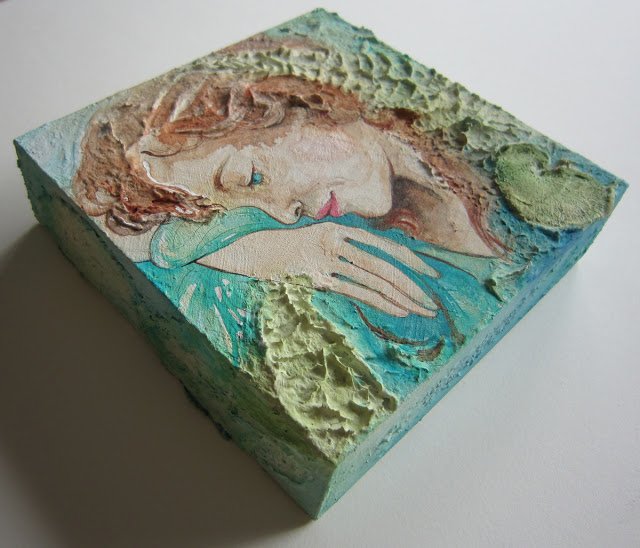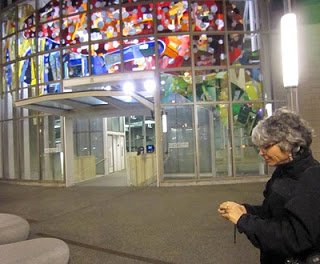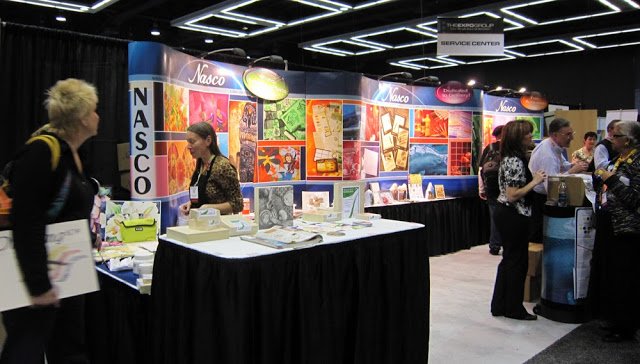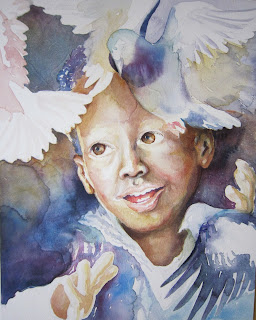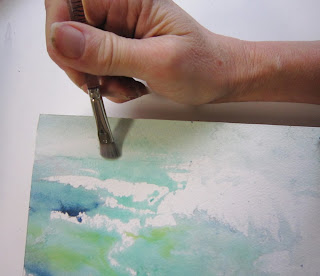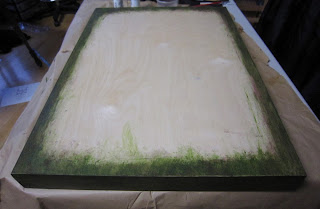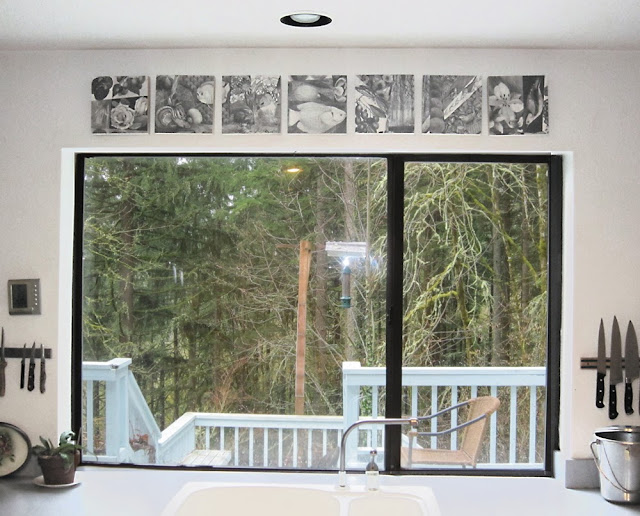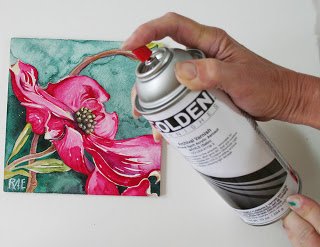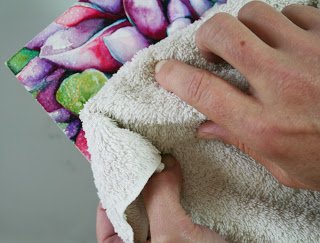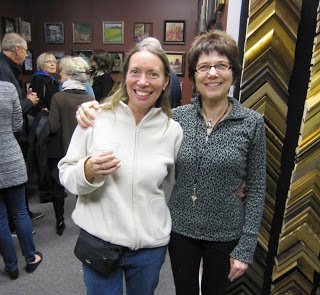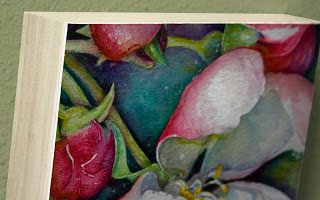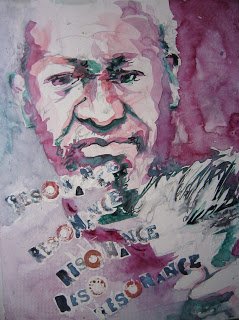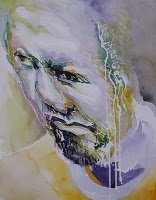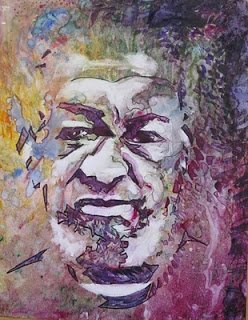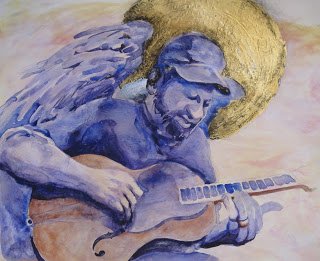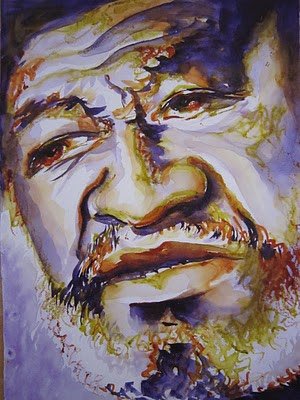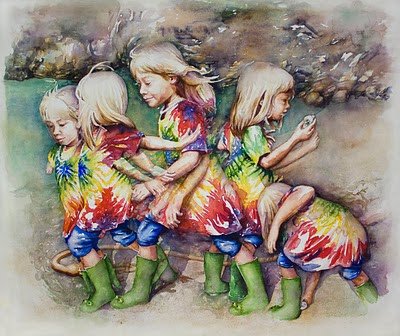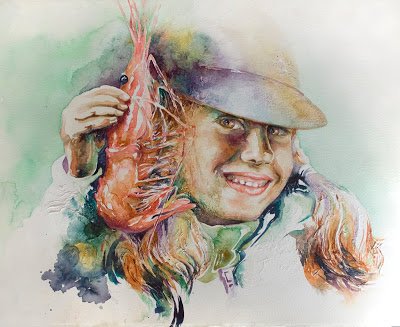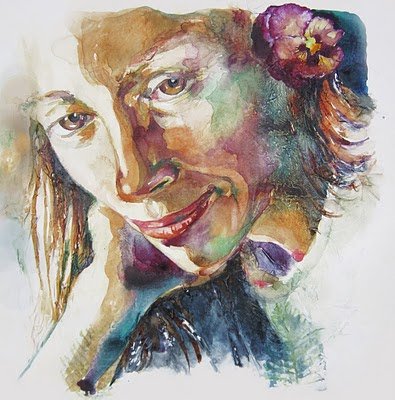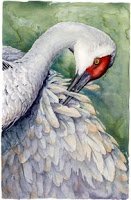A couple of “special effects” can be used in conjunction with watercolor paint to create interesting texture. I am using them on the Cradled Panels by American Easel.
KROMA Crackle, comes in a tube. It’s a new product made by a company in Vancouver BC. An actual sample of it is applied to the label.
I decided to make a rose, here’s the sketch this piece is loosely based on:
Here I’ve painted the background watercolor on paper. The reflection in this photo makes it appear whitish, but out of the tube it’s entirely translucent.
Here it is beginning to dry. It turns white when it dries and becomes much flatter. The size of the crackles are in proportion to the thickness of the application. It will take several days to dry completely!
While durable, it is also subject to flaking off watercolor paper if handled… so no handling until it is fully cured. In this detail you can see that a few pieces have flaked off.
I then sealed with the Golden Top Coat with UVLS to further bond it to the surface.
Here’s the finished piece before trimming the edges.
…………………….
For very sculptural texture… try Fiber Paste, made by Golden. You can lift it into peaks or spread it with a palette knife.
Here’s the initial drawing from my sketchbook.
First I spread Fibre Paste onto a 4-inch cradled panel with a palette knife. I used ferns and leaves to press into the stuff then lifted them up — with the exception of the heart shped leaf, bottom right, which I left adhered to the Fiber Paste. After it completely dried, I coated it all with a mix of absorbent Ground / Watercolor Ground to accept watercolor paint, then penciled in the drawing, below.
Here’s the final piece after painting with watercolor. Notice I also used texture on the sides.


